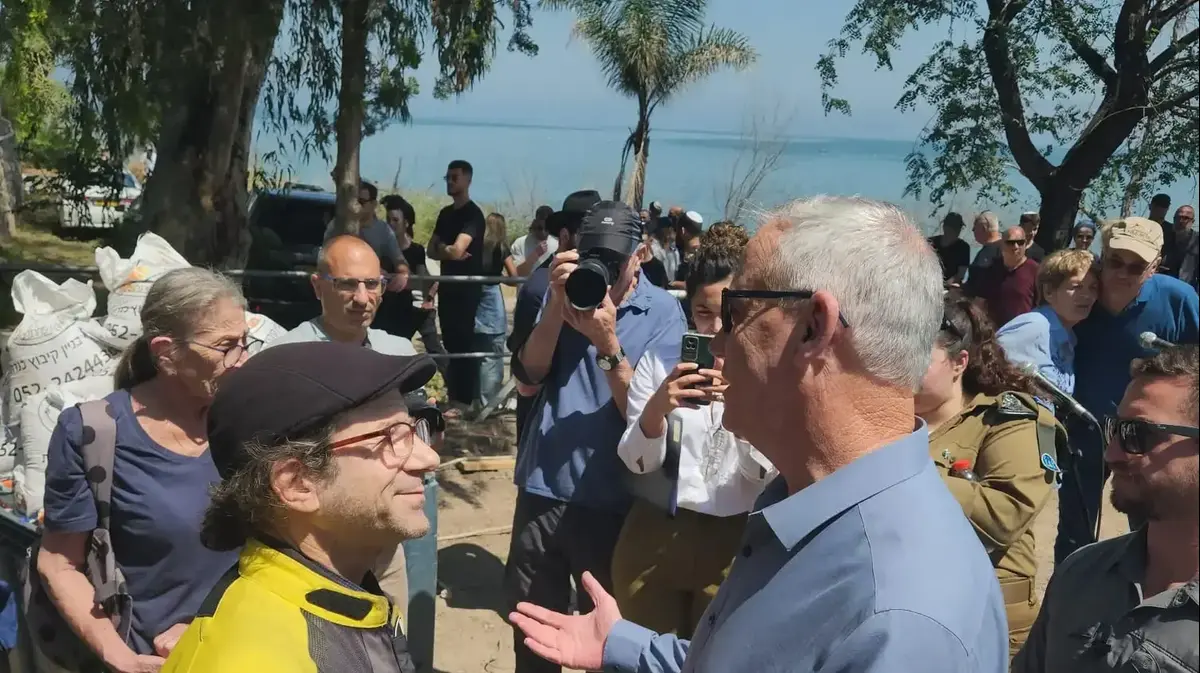The decision to allow artists to sing on trucks and make us all sing from home is good for all of us • "Music lets us feel together, almost touch each other, you don't know how important it is to your health" • Opinion
Sing, dance, rejoice!
Photo:
Miriam Tzahi
In these days of the Corona epidemic, we all become aware of the things we have taken for granted. Basic needs become luxuries, small plans like big ones are canceled, a new routine takes over the familiar, and we all learned to use zoom overnight. People all over the world go out of their way to be in more frequent contact with friends and family. Our need for social media through voice, looks, gestures, and touch has only sharpened since the outbreak of the epidemic. All of these and more are part of what defines us as a social species, and are essential to our well-being. When excluded from us, as in the past two months, music is a bridge that can cross virtual and real walls, and allows us to feel together, almost touch each other, even for a moment.
First in Italy and then all over the world, people took to the balconies and the streets to sing together and thank the medical teams that are at the forefront of the fight against the virus. On our Independence Day, which we will all be closing in, it is very important to continue singing together, enjoying the music together and connecting together through it. You don't know how important it is to your health.
• Independence in "Israel today": ten hours of celebrations
• Exciting: Watch the Declaration of Independence in color
When we sing together we sync to both the rhythm and to each other. Not only at the traffic level but also at the emotional level. We all experience the highlights of music together, we breathe together with each sentence ending, and we experience together the emotional world that emerges from the music and text. We harmonize with our interwoven voices with the feeling that the whole is larger than its parts. Not surprisingly, research has found that singing in a choir (especially an amateur choir that does not have the stress of a professional choir), improves mood, reduces negative emotions and a sense of urgency, and enhances participants' trust and socialization. Several studies have also found that choral singing increases oxytocin levels and lowers cortisol suppressor hormone levels. Oxytocin, known as the "love hormone", is a neuropeptide that regulates social behavior that promotes spousal contact, parental care, and behaviors of rapprochement, cohesion, and attachment. Much research is still needed to better understand the range of physiological effects of choral singing, but there is no dispute about its positive psychological effects.
How old is the music?
Like any phenomenon so deeply rooted in human history, music also raises many questions. Did the music appear "only" some 70,000 years ago, alongside other first cultural objects such as cave paintings, or perhaps even before that? For example, archaeologist Stephen Mitten believes that music, or some other form of musical communication, has developed over 200,000 years ago among the Homo sapiens and the Homo Nandertalis.
Our need for social media through voice, looks, gestures, and touch has only sharpened since the outbreak of the epidemic
In trying to unravel the roots of musicality, evolutionary anthropologist Dean Falk compared mother-infant communication patterns of our closest animals (chimpanzees and bonobo monkeys) to patterns found in humans. It offers a fascinating theory that the roots of music are in mother-infant communication. One of the most dramatic differences between a human baby and a baby chimpanzee is brain maturity. The human baby's brain does not fully mature at birth because of the head size limitation that can pass through the birth canal. These limitations were created as a result of a change in posture when humans straightened - which changed the size and position of the pelvis. Indeed, while a baby chimpanzee can hang on his mother's fur within a few hours and she will carry it on her back, a human baby is completely helpless and not motor-developed. Ancient human mothers carried the baby in their arms. But when they were gathering food, for example, they had to put the baby down - an action that undoubtedly provoked distress. The only way to calm the baby from afar was through a soothing voice (a kind of pre-language) that could, at least temporarily, replace close physical contact.
Indeed, to this day, baby-directed speech is very close to music in its characteristics - high pitch, high-pitched speech with many repetitions that create a sense of rhythm. In this sense, the roots of music are in our need for human contact and closeness, and it transmits a sense of human presence to which we can connect.
Get into the rhythm
Music however is not just a voice communication with changes in music. It has another vital facet - that of the butcher. Brain research shows that newborns (two days old) can recognize the musical beat (a repetitive unit of music to which we often respond motorically, such as nodding, tapping or clapping). Toddlers often move to the rhythm of the music. This ability to detect and synchronize the rhythm in a motor way is absent in most other animals, and in those it is (animals who learn their vocal expressions from their species, such as songbirds), are much less developed than humans.
It is no coincidence that music and dance go hand in hand, and even the dance may have preceded the music, creating the infrastructure for synchronized action that leads to the sense of group cohesion. Studies from the last 20 years show that simple activities like walking or swinging in sync are enough to increase empathy for one another, a sense of similarity, trust and willingness to help. For example, children who rocked in sync with the Experimental Editor were more sensitive to her feelings when she directed a situation in which they needed their help (e.g., collecting objects that fell "wrong" to the floor) and offered more help than children with whom they swung out of sync.
In light of the research on the abilities of the music we have cited and many others, it is not surprising that the seven social and psychological distress that we are experiencing these days, people find themselves involved in making music together also in a state of physical remoteness.
Prof. Ronnie Granot is a member of the Department of Musicology of the Hebrew University
• Is the Reichel era worthy of a hit?
• Israel's longest Independence Day broadcast
• Eyal Berkowitz: "Odeh Painted Supports Terrorism"
• Demonstration against the appearance of Eyal Golan
• Watch: Rodberg Lake in pregnancy photos
• "Chambers": Love does not buy in reality















